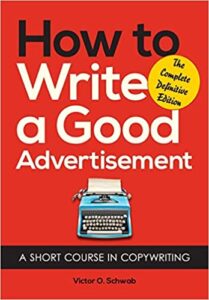Social proof is a phrase coined by psychologist Robert Ciadini. It describes a psychological and social phenomenon wherein people copy the actions of others when attempting to undertake behaviour in a given situation.
In other words, we look to other people’s actions to confirm our own.
The towel experiment
Robert Ciadini did an experiment to test the power of social proof on towel re-usage in hotels. We’ve all seen those cards that are left in hotel rooms encouraging people to reuse their towels during their stay. Reusing towels saves a hotel time in terms of labour, is more economical in cost, and is more environmentally friendly.
Cialdini and his team wanted to see if they could use the principle of social proof to increase the percentage of people who reuse their towels more than once.
They printed new cards which stated: “75% of guests who stayed in this room used their towels more than once.”
These cards were then placed in half of the hotel’s rooms. They tested this against a different message which stated the benefits of towel re-usage and its positive effects on the environment.
The guests who had seen the first message were 26% more likely to reuse their towels than those who saw the environmentally-based message.
Why did this simple change in messaging work?
Because we look to the actions of others to guide our decision-making process either at a conscious or unconscious level.
Social proof is a commonly used tactic in marketing, but a lot of marketers either under utilise it or use it incorrectly. We see social proof in action all the time, especially online, where sharing opinions and experiences is easy to do.
Social proof online
Review sites such as Trustpilot, IMBD and TripAdvisor rely completely on the power of social proof provided by users. Sites such as
Amazon uses social proof very well. Their review system is something that I look to when deciding whether to buy something or not. If something has a large number of reviews with high 4-5 star ratings then I normally go for it.
They also use the power of social proof with their recommendations – “People that brought x also brought y”. We tend to trust people who have similar interests and tastes, so highlighting other items that people similar to me have brought increases the likelihood that I’ll also buy it, or at least consider buying it.
When we see a lot of people doing something it influences and validates our decision to do it also.
This doesn’t just apply to purchasing decisions but also applies to everyday actions and behaviours. If we get to the bus stop and everybody is standing in an orderly queue, we are more likely to also join the queue instead of just jumping the queue and barging our way onto the bus.
If we come across a post on Facebook with a lot of likes or a video on YouTube with a lot of views we are more likely to view them also.
How To Use Social Proof Effectively
State the number of customers you have served or how many products you have sold
You can do this on your website or in your marketing communications.
Mcdonald’s utilised this to great effect by displaying in their drive-thru restaurants the running count of how many hamburgers had been sold by the company to date.
“1 million hamburgers sold” is a pretty convincing statement that what they’re selling must be good if so, many people are buying, which in turn leads more people to want to buy.
Allow customers to leave reviews & ratings
Encourage customers to leave reviews and feedback.Sign up for review sites such as Trustpilot, and ask your customers to leave a review whenever they have had an experience with your company or brand.
Reading a few positive reviews may be the nudge a prospect needs to convince them to buy.
Use testimonials to tell your story
Testimonials allow you to selectively highlight some of your most favourable reviews and showcase them with pride. They are usually more detailed than reviews and can be used to tell the story of how your product or service positively impacted your customer’s life/business etc.
Stories are a powerful way to communicate your message and using a real-life testimony from one of your happy customers is an effective method of conveying the benefits of your product and services. Present the most positive testimonials by some of your most prominent customers, and you’ll be able to command the most social proof.
Providing some details about the customer giving the testimonial might be able to attract other similar customers as well (e.g. testimonials from dentists about how your consultancy service helped boost their dental business can attract other dentists or medical professionals interested in getting the same results).
Some customers may think your service or product isn’t suited for them, but by presenting testimonials from customers from similar backgrounds, you provide social proof that they can relate to which can influence their decisions to buy and change their opinions about you. For maximum effect, use testimonials from customers from a variety of different backgrounds, professions, and demographics.
Use influencers to review your products and services
Influencers within your target market or niche can have a greater impact as they’re seen as authorities by your target audience, but influencers from outside your niche can be just as impactful.
If an influencer with a large following on social media gives you a positive endorsement this will have a significant impact on the way in which you are perceived.
Collect testimonials and reviews from influencers and share these in your marketing copy and on your social channels where others can see them.
Avoid using social proof negatively!
Negative Social Proof occurs when we talk about the behaviour that we want people to avoid, therefore reinforcing it and making it work against us.
One example of the use of negative social proof is Wikipedia – In their message appealing for donations to keep the site free to use, they previously used the statement “only a tiny proportion of our readers give”.
This statement highlighted the fact that most people do not donate and therefore reinforced this behaviour among other readers. Many of their readers read that and think, “Oh I’m not the only one not donating” and carry on using the site without giving any further thought to donating.
Avoid doing this by highlighting only the behaviours you want your customers to act on.
Conclusion
By using social proof in your sales and marketing copy you will be able to increase trust, demonstrate the viability of your product, and ultimately increase sales.
Incorporate social proof into all aspects of your sales funnel. You should share these testimonials and stories on your website, in your ad copy, and on your social media platforms – at as many touchpoints as possible.
If you have great success stories of people getting a desired result or having a great experience with your product then make sure you share those stories.
Hearing about the positive experiences of others will encourage new prospects to take action on your offers. It could be just the nudge they need to push them over the fence and convince them to make a buying decision.
Check out our other article which explains the other principles of influence and persuasion Robert Cialdini researched and wrote about.




